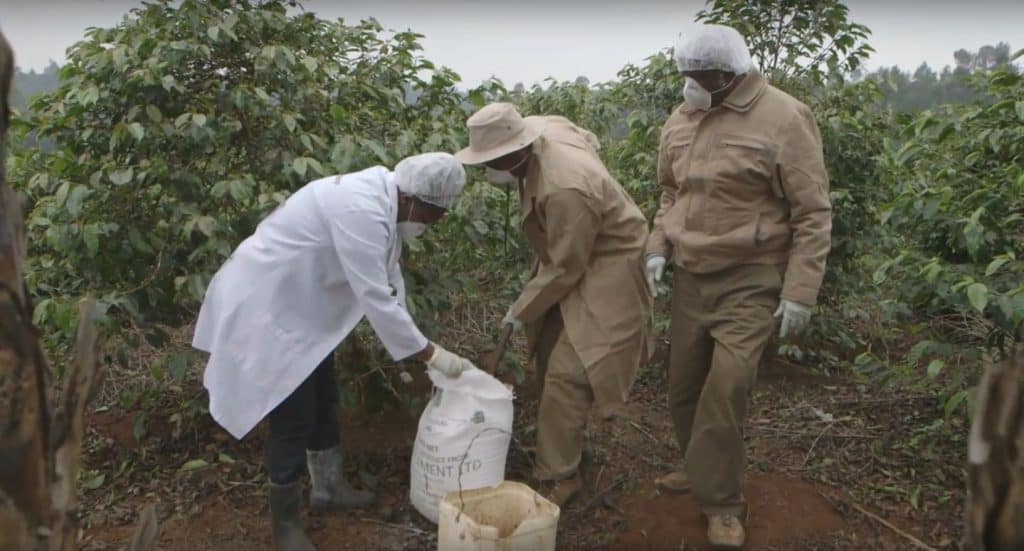
Agriculture in Kenya is on its way up but not without serious productivity challenges and limitations. What can we do to overcome these challenges and become a food-secure nation? Ruth Vaughan investigates.
The modern world takes food for granted. Historically the struggle to find or produce enough food to eat was the focus for living, and took up most of our time.
2 billion of the world’s 7.3 billion people still do not get enough to eat. Famines still stalk Africa. Ethiopia, Mozambique, and Zimbabwe (previously the breadbasket of Africa) still rely on food hand-outs, and millions of African still suffer from malnutrition.
By 2050 the World’s population is projected to grow to 10 billion and there is a rising demand for more fish, dairy and meat products. These are higher up in the food chain and require more fodder production. It has been predicted that to sustain the population increase and satisfy the new demands a staggering 70% more food will need to be produced.
In Kenya, the current population is estimated at 47 million and expected to nearly double to 95 million by 2050. Agriculture in Kenya is a fundamental instrument for sustainable development, poverty eradication, and food security. The Kenya Vision 2030 highlighted the growth of the Agricultural Sector as a major challenge and the Kenyan Government is striving to improve agricultural productivity through numerous government and donor-supported programs. Climate change is worsening Kenya’s aridity situation because the increased weather variability is not suitable for sustainable food production.
15-17% of the land used for agriculture in Kenya has sufficient soil fertility and rainfall to be farmed. Agriculture is the largest contributor to Kenya’s GDP and Kenya’s exports. Over the years the land being farmed has seen a slow fertility degradation resulting in worsening yields per hectare, however, total output has increased due to clearing and expansion. This has put pressure on wildlife and most importantly on the forests and water towers of our country, which are so important for determining rainfall and water storage, resulting in rivers drying up. This is not the answer to feeding the population increase.
Increased agricultural output should be driven by agricultural intensification and increasing the yields per acre. There is a massive yield deficit in our current agricultural production and enormous scope for improvement that potentially could see increased outputs on less land, allowing more land to become available for urbanisation, recreation, forests and wildlife (also very important for the economy).
The agricultural productivity gap in Kenya is large, but smaller than many of its neighbours! Cereal yields around the world, per ha, per country, per year can be compared as follows:- Africa 1.6 t/ha/yr, India 2.9 t/ha/yr and USA 7.6 t/ha/yr. In 2014, World Bank assessed maize production in Kenya at <2.3 t/ha/yr, Europe was >9 t/ha/yr. Clearly there is room for improvement and Kenya could potentially double or triple its yields.
The Kenya Government and donor-funded NGO’s are working hard to remove the constraints in agriculture to bring up the yield expectations. Yield restrictions have been identified as follows:-
The amount of rainfall and the length of the wet seasons is a major factor. Increasing climate change and weather variability is predicted. Only about 20% of the land in Kenya that can be irrigated is (106,000 ha vs. 540,000 ha). Rejuvenating existing irrigation projects and increasing water storage is on-going and should be fast tracked!
Crop selection is most important for successful farming. For example maize needs high rainfall but sorghum, that doesn’t, gets destroyed by birds..Kenya has a massive variation in climatic zones, altitudes, soil types and rainfall. Regional trials are needed to identify appropriate crops.

Soil health is critical for long term sustainable farming and increased outputs. Soil mapping at county level, with proper fertilizer blending is crucial. Soil types in Kenya are very variable and fertilizers that are suitable in one region can be detrimental in another. Some agricultural zones are very acidic due to years of over-use of fertilizer; and liming can more than triple yields in these areas.
Variety selection, breeding and testing new strains, access to clean seed in the major starch crops, is critical and being addressed by the various Institutes and organisations.
Availability, logistics, cost and access to appropriate farm inputs (seeds, manure, fertilizers, lime, gypsum, pest control products) is very limiting. Fertilizer prices in Kenya are some of the highest in the World. Government subsidies on appropriate fertilizers can go a long way to improve yields.

Agricultural machinery is another big limiting factor. Tractors per hectare of arable land – Kenya has 24, compared to Japan with an excessive 4,600. Cost of equipment, and access to finance and average farm sizes limit this. Forming co-operatives to share equipment or hiring Governmental machinery are the answer.
Knowledge, education and access to information are crucial. Agrovets are popping up in most rural villages, and they are being trained to offer extension services. The number of extension services is increasing. The Internet and mobile phone technology services in Kenya are very advanced.
Land tenure and ownership are important. Improving farm infrastructure and soil health through better farming practices and fertility correction inputs is an expensive long term project, with a long pay-back time, not promoted by short term occupancy. Land ownership gives access to finance.
Access to finance and excessive interest rates is a major stumbling block for agriculture that has recently been addressed in a new bill from parliament.
Access to markets, better rural infrastructure (roads, electricity etc.), price fixing and the dreaded ‘middle man’ are all being addressed.
In summary, tripling agricultural outputs on existing land is not impossible for Kenya. The constraints to agriculture in Kenya have been identified and are being addressed, and while Kenyan farming still has room for improvement it has come a long way in a short time. Not only does Kenya have the potential to feed its own millions, there is the potential to feed its neighbours too. And, of course, soil testing is the key to unlocking the yield increases..
Till next time,
Happy farming!
Ruth

Ruth Vaughan is the Technical Director at Crop Nutrition Laboratory Services Ltd. (CROPNUTS). Ruth is also a contributing author to Kenya’s leading horticulture magazines such as the HortFresh Journal, HortiNews and Floriculture. Ruth is a great believer in soil health, organic matter, biochar and carbon sequestration as a way to alleviate climate change and increase food security. Loves visiting farmers and seeing all the different farming methods
Order our services and get to know how to improve your soil for better yeilds.